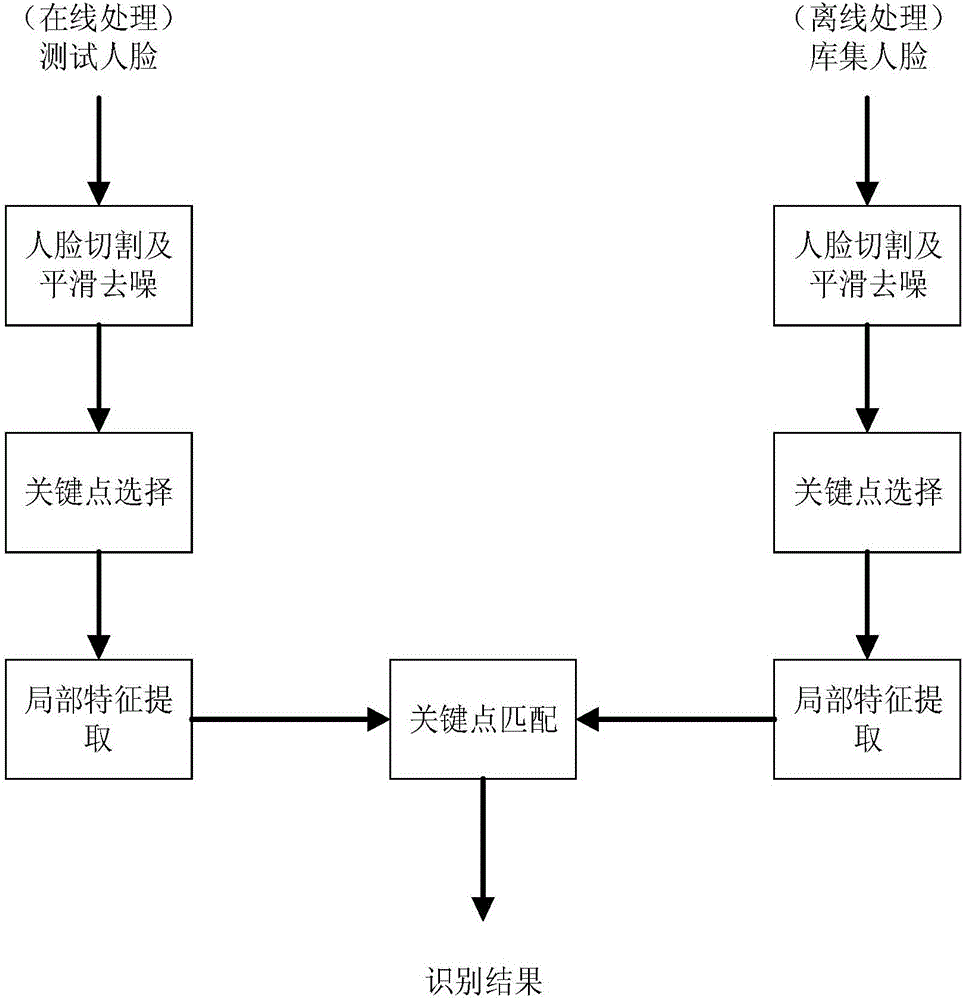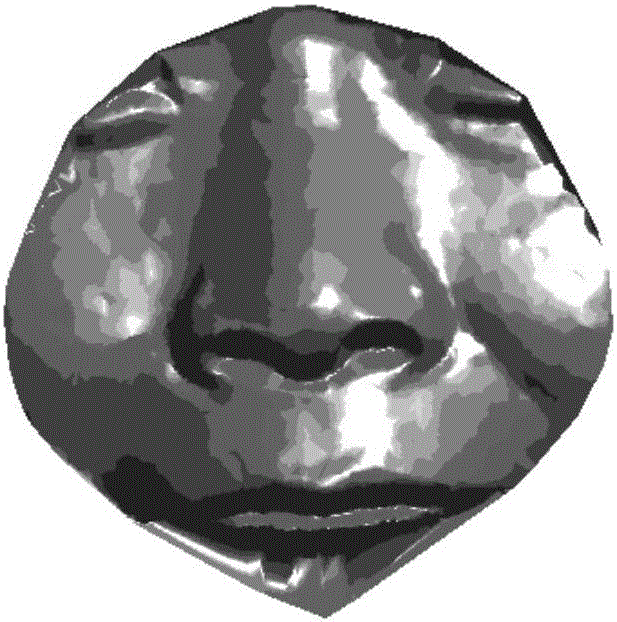Key point and local characteristic-based three-dimensional human face identification method
A three-dimensional face and local feature technology, applied in the field of face recognition, can solve problems such as affecting the recognition effect, indistinguishable recognition algorithms, and loss of face three-dimensional data.
- Summary
- Abstract
- Description
- Claims
- Application Information
AI Technical Summary
Problems solved by technology
Method used
Image
Examples
Embodiment 1
[0080] The three-dimensional face recognition method based on key points and local features of the present invention realizes the three-dimensional face recognition process through the Matlab R2015b programming tool in the Windows operating system. The experimental data comes from the FRGC v2.0 3D face database, which contains 4007 face models of 466 individuals for testing.
[0081] figure 1 It is an overall flow chart of the inventive method, and the concrete steps are as follows:
[0082] Step 1: Extract the face area from the input 3D face point cloud with the tip of the nose as the center of the sphere and a radius of 90 mm. Perform meshing operation on the extracted 3D face point cloud, use grid-based smoothing algorithm to smooth and denoise the 3D face model, and then restore the smooth 3D face mesh obtained through iterative processing to 3D Face point cloud.
[0083] Step 2: Take the tip of the nose as the center of the sphere and 50mm as the radius to extract the...
Embodiment 2
[0133] Adopt the method of embodiment 1, carry out experimental verification. Specifically include the following steps:
[0134] Step 7: Identity authentication and recognition experiments, all experiments use R1RR (Rank-one Recognition Rate) as the recognition performance index.
[0135] Step 7.1: Experiment 1. This experiment uses the FRGC v2.0 database, which collects 4007 face point clouds of 466 objects, including faces with expressions such as smiling, surprised, and angry. The experiment selects the first One is used as the library set, and the rest are used as the test set, and the recognition rate is 96.9%.
[0136] Step 7.2: Experiment 2. This experiment is based on the Bosphorus database, which collects 4666 face point clouds of 105 objects, in which there are many types of expressions and a large range of expressions. In this experiment, 194 neutral faces are used as the library set, and expressive faces are used as the test set. In the experiment, neutral faces...
PUM
 Login to View More
Login to View More Abstract
Description
Claims
Application Information
 Login to View More
Login to View More - R&D
- Intellectual Property
- Life Sciences
- Materials
- Tech Scout
- Unparalleled Data Quality
- Higher Quality Content
- 60% Fewer Hallucinations
Browse by: Latest US Patents, China's latest patents, Technical Efficacy Thesaurus, Application Domain, Technology Topic, Popular Technical Reports.
© 2025 PatSnap. All rights reserved.Legal|Privacy policy|Modern Slavery Act Transparency Statement|Sitemap|About US| Contact US: help@patsnap.com



